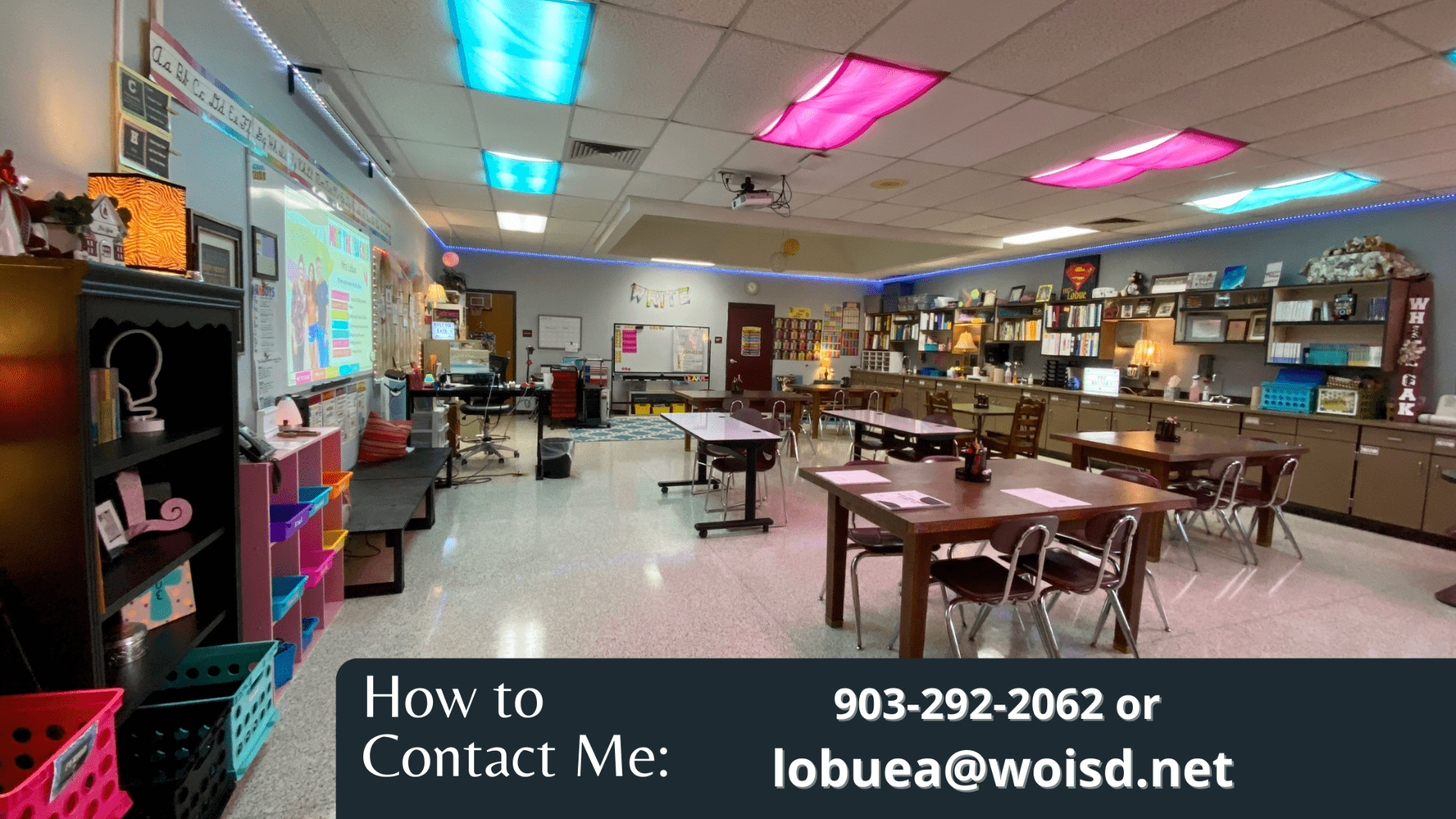Composition: listening, speaking, reading, writing, and thinking using multiple texts
STRAND ONE- FOUNDATIONAL LANGUAGE SKILLS
6.1 Developing and sustaining foundational language skills: listening, speaking, discussion, and thinking–oral language. The student develops oral language through listening, speaking, and discussion. The student is expected to:
(A) listen actively to interpret a message, ask clarifying questions, and respond appropriately;
(B) follow and give oral instructions that include multiple action steps;
(C) give an organized presentation with a specific stance and position, employing eye contact, speaking rate, volume, enunciation, natural gestures, and conventions of language to communicate ideas effectively; and
(D) participate in student-led discussions by eliciting and considering suggestions from other group members, taking notes, and identifying points of agreement and disagreement.
VOCABULARY
6.2(B) use context such as definition, analogy, and examples to clarify the meaning of words (R)
—————————————————————————————–
STRAND THREE- RESPONSE SKILLS
6.6 Response skills: listening, speaking, reading, writing, and thinking using multiple texts. The student responds to an increasingly challenging variety of sources that are read, heard, or viewed.
6.6(B) write responses that demonstrate an understanding of texts, including comparing sources within and across genres
6.6(C) use text evidence to support an appropriate response
6.6(D) paraphrase and summarize texts in ways that maintain meaning and logical order (R)
6.6(F) respond using newly acquired vocabulary as appropriate
6.6(G) discuss and write about the explicit or implicit meanings of text
6.6(H) respond orally or in writing with appropriate register, vocabulary, tone, and voice
—————————————————————————————–
STRAND 4 – MULTIPLE GENRES
6.9 analyze the authors’ choices and how they influence meaning; apply author’s craft purposefully in writing and speaking
6.9(B) analyze how the use of text structure contributes to the author’s purpose
6.9(C) analyze the author’s use of print and graphic features to achieve specific purposes
6.9(D) describe how the author’s use of figurative language such as metaphor and personification achieves specific purposes (S)
6.9(E) identify the use of literary devices, including omniscient and limited point of view, to achieve a specific purpose (S)
6.9(F) analyze how the author’s use of language contributes to mood and voice
6.9(G) explain the differences between rhetorical devices and logical fallacies
—————————————————————————————–
STRAND 6- COMPOSITION
6.10 Writing process. The student uses the writing process recursively to compose multiple texts that are legible and uses appropriate conventions.
TOOLS TO KNOW WRITING PROCESS
6.10(A) plan a first draft by selecting a genre appropriate for a particular topic, purpose, and audience using a range of strategies such as discussion, background reading, and personal interests
6.10(B) develop drafts into a focused, structured, and coherent piece of writing by:
(I) organizing with purposeful structure, including an introduction, transitions,
coherence within and across paragraphs, and a conclusion
(ii) developing an engaging idea reflecting depth of thought with specific facts and details
6.10(C) revise drafts for clarity, development, organization, style, word choice, and sentence variety
6.10(D) edit drafts using standard English conventions, including:
(i) complete complex sentences with subject-verb agreement and avoidance of splices, run‐ons, and fragments
(ii) consistent, appropriate use of verb tenses
(iii) conjunctive adverbs
(iv) prepositions and prepositional phrases and their influence on subject‐verb agreement
(v) pronouns, including relative
(vi) subordinating conjunctions to form complex sentences and correlative conjunctions such as either/or and neither/nor
(vii) capitalization of proper nouns, including abbreviations, initials, acronyms, and organizations
(viii) punctuation marks, including commas in complex sentences, transitions, and introductory elements
(ix) correct spelling, including commonly confused terms such as its/it’s, affect/effect, there/their/they’re, and to/two/too
6.10(E) publish written work for appropriate audiences
—————————————————————————————–
STRAND 7- INQUIRY & RESEARCH
6.11 Genres. The student uses genre characteristics and craft to compose multiple texts that are meaningful.
6.11(A) compose literary texts such as personal narratives, fiction, and poetry using genre characteristics and craft
6.11(B) compose informational texts, including multi‐paragraph essays that convey information about a topic, using a clear controlling idea or thesis statement and genre characteristics and craft
6.11(C) compose multi‐paragraph argumentative texts using genre characteristics and craft
6.11(D) compose correspondence that reflects an opinion, registers a complaint, or requests information in a business or friendly structure
RESEARCH (embedded skills throughout Reading and Writing)
6.12 Inquiry and research: listening, speaking, reading, writing, and thinking using multiple texts.
The student engages in both short-term and sustained recursive inquiry processes for a variety of purposes.
(Instructional Focus)
6.12(A) generate student‐selected and teacher-guided questions for formal and informal inquiry
6.12(B) develop and revise a plan
6.12(C) refine the major research question, if necessary, guided by the answers to a secondary set of questions
6.12(D) identify and gather relevant information from a variety of sources
6.12(E) differentiate between primary and secondary sources
6.12(F) synthesize information from a variety of sources
6.12(G) differentiate between paraphrasing and plagiarism when using source materials
6.12(H) examine sources for:
(i) reliability, credibility, and bias
(ii) faulty reasoning such as hyperbole, emotional appeals, and stereotype
6.12(I) display academic citations and use source materials ethically
6.12(J) use an appropriate mode of delivery, whether written, oral, or multimodal, to present results
APPLICATION
6.12 use research skills to plan and present in written, oral, or multimodal formats



